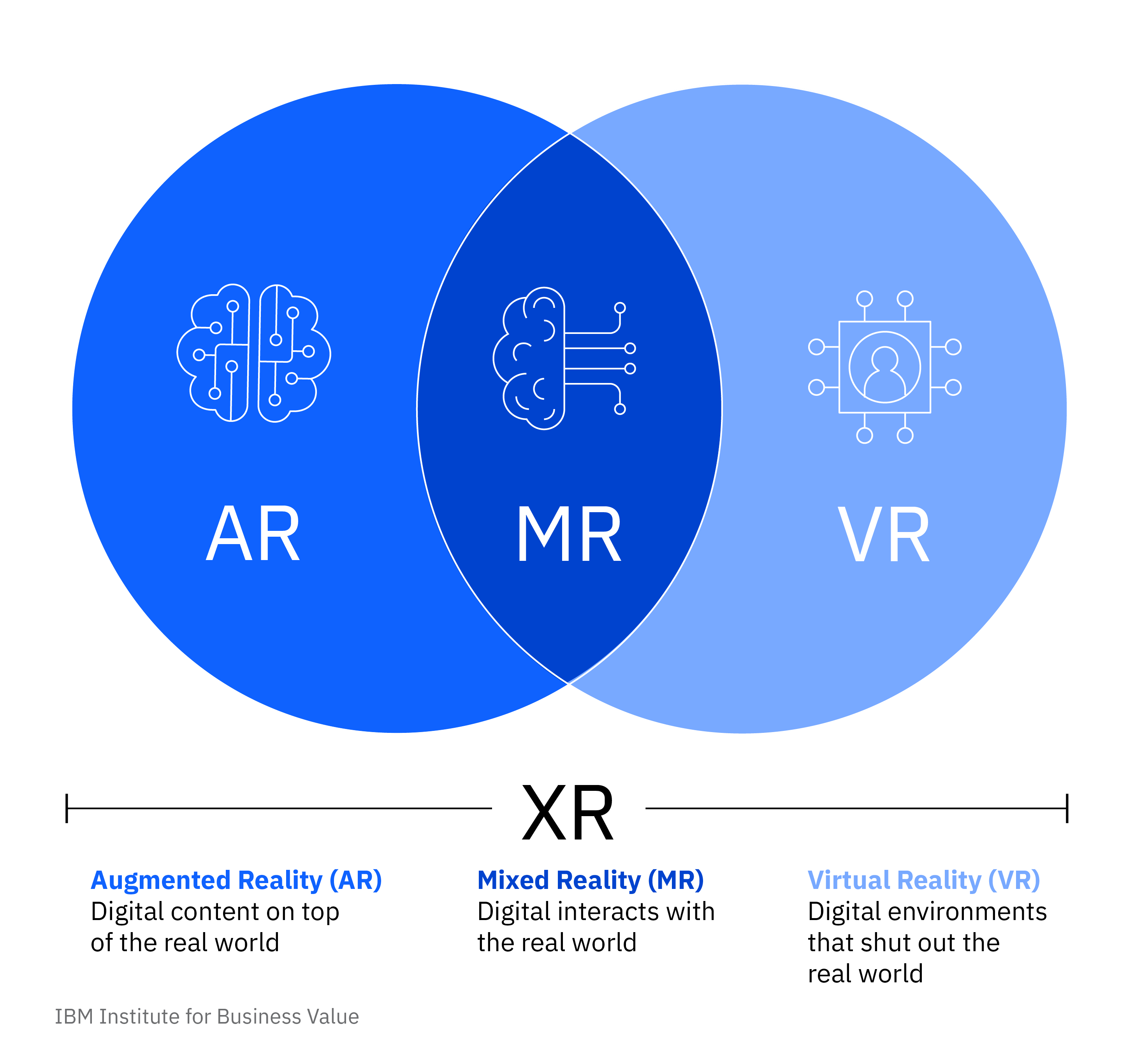AR and VR in the workplace
It’s time for businesses to adapt to a different normal. Companies need to build resilience and flexibility into their processes, work platforms, and employee enablement. They have to stay nimble to respond to a rapidly changing environment and shifting customer demands. Which is why they need, as never before, the benefits of Extended Reality (XR).
The technologies we collectively refer to as XR are: Augmented Reality (AR), Virtual Reality (VR), and Mixed Reality (MR), which includes other hybrid, immersive experiences.

XR enables efficiency amidst disruption
Companies across industries have successfully deployed XR solutions, with customer service and support a favorite target for more than half of the organizations planning, implementing, or expanding AR. Forty percent of small-to-midsize businesses indicated they are currently evaluating AR/VR, with Gartner estimating as many as 70 percent could do so by 2022.
Yet, despite mounting enthusiasm for XR, by the end of 2019, widespread adoption was still beyond the horizon. And then COVID-19 hit.
Reality has shifted—and the advantages of XR have soared from aspirational to essential.
Suddenly, remote work was a necessity, travel next to impossible, and companies found themselves in crisis mode. Doing things differently seemed daunting, but people found creative ways to adapt. As organizations implemented new digital approaches to get work done, the benefits of these changes emerged. Even after the pandemic runs its course, it’s likely many companies won’t want to revert to old methods. Reality has shifted, and with it, the advantages of XR have soared from aspirational to essential.
XR can provide organizations with opportunities for greater efficiency, accuracy, and productivity for their workforces. But equally importantly, it can help deliver what companies sorely need now: the elasticity to prosper despite adversity, trim costs, and act quickly.
Companies using AR have reported average productivity improvements of 32%.
XR enables digital information to live in the physical world so that people can see, hear, touch and interact with it. Combined with AI, XR becomes an extension of the human senses and how we perceive physical environments. When organizations implement XR, not only are they improving employee experiences, they are empowering employees to offer improved experiences for customers.
Companies using AR have reported a 46 percent reduction in time to complete tasks, and average productivity improvements of 32 percent. As organizations are having to reimagine strategies to provide safe and effective work environments for their employees, it’s easy to see why XR is quickly moving from proof-of-concept prototypes to mission-critical tasks.
XR can have the greatest impact in three key areas: training, workflows, and employee engagement. Learn how your organization can leverage XR to boost performance and deliver better employee experiences.
Meet the authors
Heidi Fillmore, IBM Global Industry Executive Partner Travel and Transportation Product TeamTony Storr, IBM Global Services Leader for Enterprise Mobility and Apple/IBM partnership
Originally published 24 September 2020


